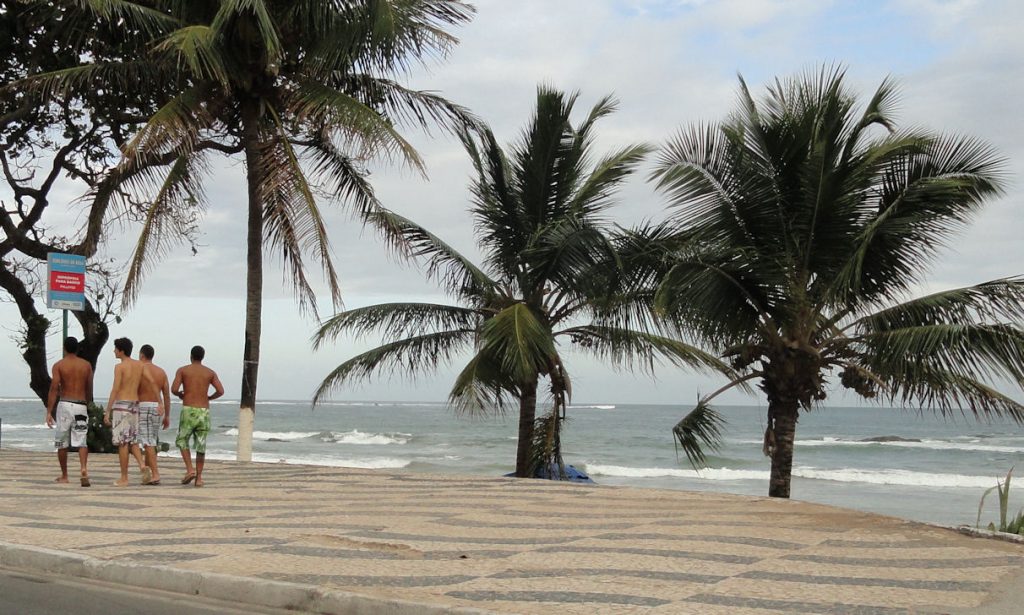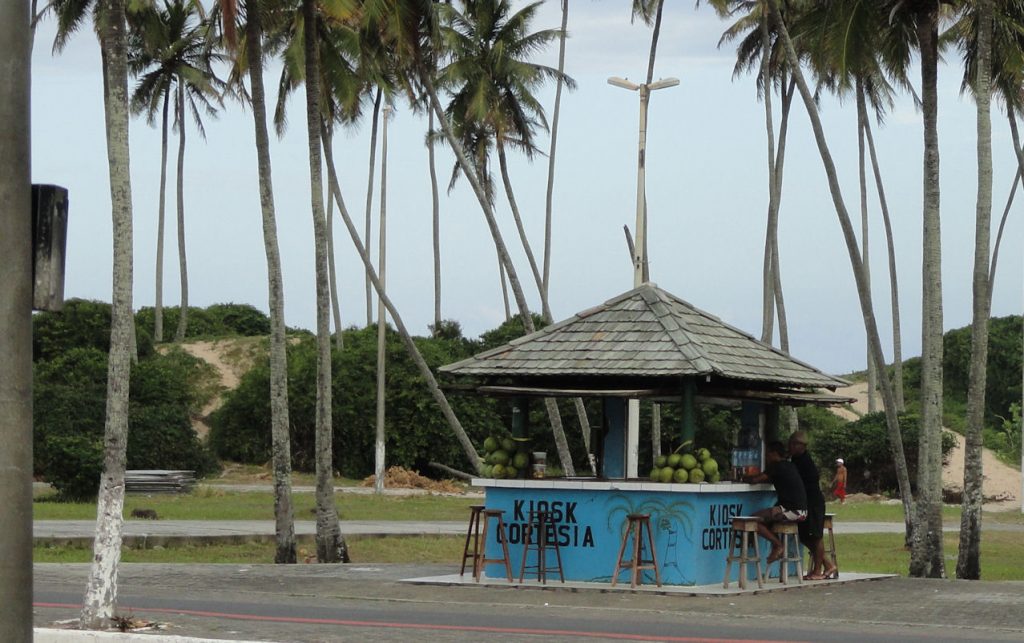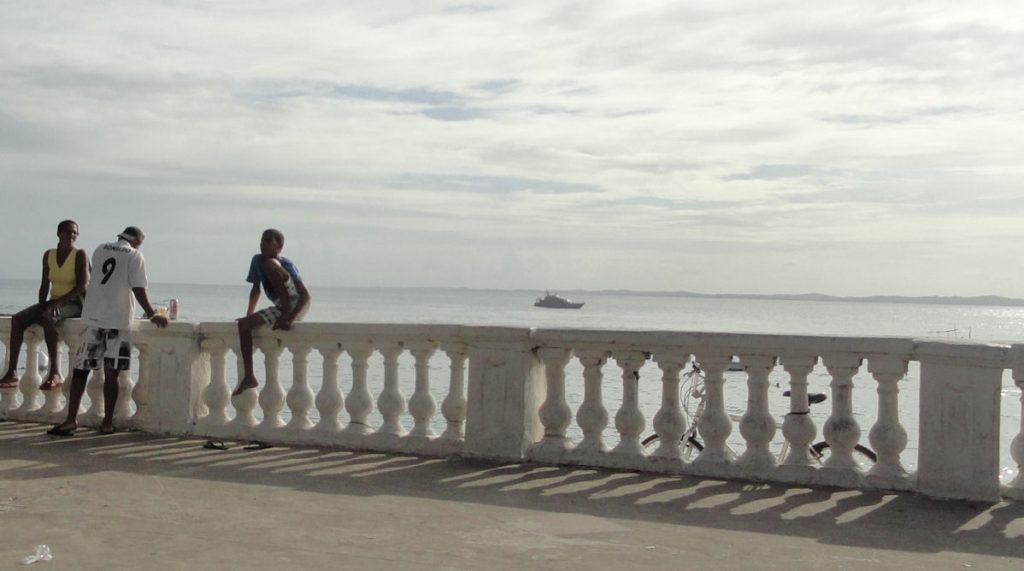
I didn’t know much about coconuts and much of what I did know was evidently wrong. I thought that inside the coconut was a whitish liquid – coconut milk. No, inside the coconut is mostly water. The Brazilians call it aqua de coco. It tastes a lot like ordinary water except it is thicker & is supposed to be good for you. I was offered coconut water lots of places in Salvador and one of the hosts told me the story of coconuts. Many people also like the white coconut meat. I happen not to, but I suppose if you are hungry enough it would be good. I also thought that the coconut was a big seed. It isn’t. There is a single seed inside the nut. When conditions are right the seed sends roots and stems out those weak spots in the shell, the things that look kind of like a face on the nut. With all these attributes, you can see what a useful thing this would be on the proverbial desert island.

The coconuts come in a green husk that floats. That is how coconuts get distributed throughout the world. The thing falls or is washed into the sea. The sea-journey and the salt water don’t hurt the coconut. If it washes up on a hospitable beach in a reasonable amount of time, a new coconut palm can be born. That is why coconut palms ring the tropical seas and are a symbol of tropic beaches.
Coconuts do not live very long, at least for trees. But they grow fast. This is another adaptation to life on the beach. Roots cannot sink too deep into the shifting sands and over the course of a few decades it is almost certain that a storm will come along that is strong enough to disrupt even a well rooted tree growing not very far above the tide line. So the coconut’s strategy is to live fast, die young and leave a nice looking husk.

My pictures are from along the sea in Salvador. The top two show coconut palms. In the second picture you can see an agua de coco stand where you can get fresh coconut water. Notice the big dunes of white sand behind the stand. I don’t know the details of how it gets deposited there, but some places along the coast these big dunes block the ocean. Some are covered by vegetation, like the ones in the picture, others are just sand.
